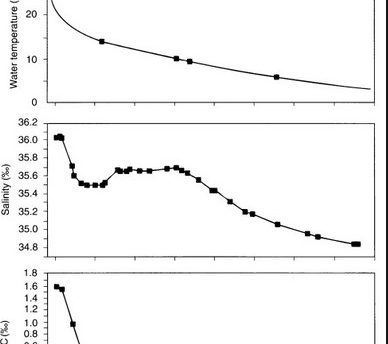
Early attempts to produce a global surface temperature record from instrumental data were confined to land surface air temperatures (e.g. Jones, 1988; Hansen & Lebedeff, 1987, 1988). All analyses indicate that during the last decade globally averaged land temperatures have been higher than in any decade in the past 140 years. Over the whole period, a global temperature increase of 0.45C/100 years has been observed (Jones, 1988). Since the interpretation of the rise in temperature is a key issue for global warming, so the accuracy of the data needs careful consideration. A number of problems may have affected the land temperature record:
1) spatial coverage of the data is incomplete and varies considerably;
2) changes have occurred in the observing schedules and practices;
3) changes have occurred in the exposure of thermometers;
4) recording stations have changed their locations;
5) changes in the environment, especially urbanisation, have taken place around many recording stations.
These problems of inhomogeneity are discussed more fully in section 3.2.2.
The oceans comprise about 70% of the global surface. Obviously, a compilation of global temperature variations must include ocean surface temperatures. Farmer et al. (1989) have created historical analyses of global sea surface temperatures (SSTs) which are derived mostly from observations taken by commercial ships.
The combined land air and sea surface temperature is shown in Figure 6.9 (DoE, 1994). A linear trend fitted between 1860 and 1993 indicates temperature increases of 0.47C, 0.53C and 0.50C for the Northern Hemisphere, Southern Hemisphere and globe respectively (Folland et al., 1990). Associated uncertainties are of the order of 30% (0.15C), when all sources of inhomogeneity are considered.
Combined land and ocean temperatures have increased rather differently in the two hemispheres. A rapid increase in the Northern Hemisphere temperature during the 1920s and 1930s contrasts with a more gradual increase in the Southern Hemisphere. Both hemispheres had relatively stable temperatures from the 1940s to the 1970s, although there is some evidence of cooling in the Northern Hemisphere during the 1960s. Since the 1960s in the Southern Hemisphere but after 1975 in the Northern Hemisphere, temperatures have risen sharply.
Whilst globally-averaged records offer a means of assessing climate change, it is important to recognise that they represent an over-simplification. Significant latitudinal and regional differences in the extent and timing of warming exist (Folland et al., 1990). In addition, winter temperatures and night-time minimums may have risen more than summer temperatures and day-time maximums.




Leave a Reply